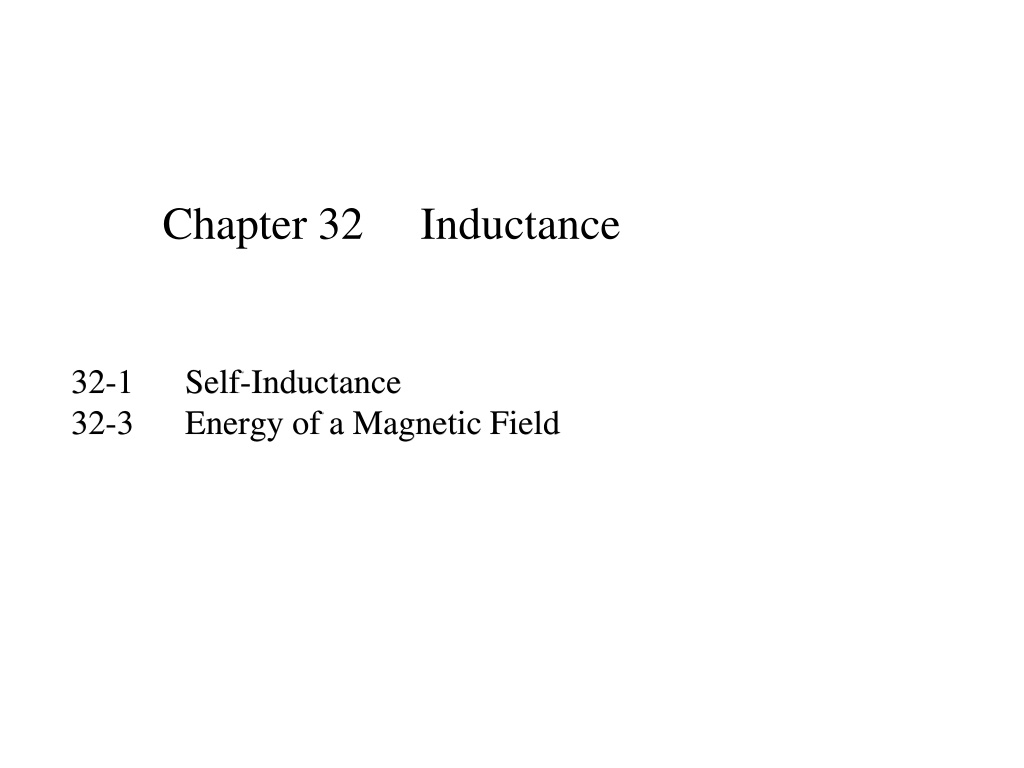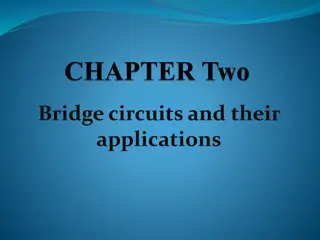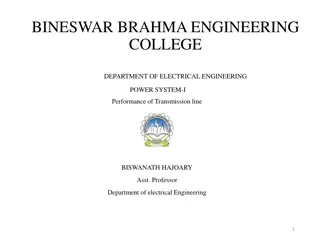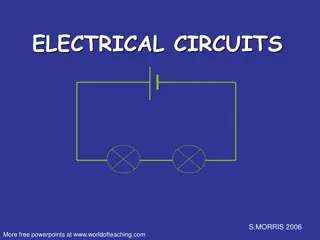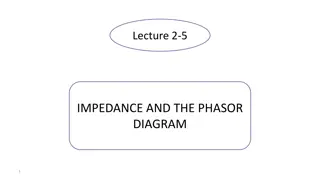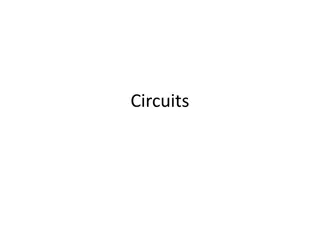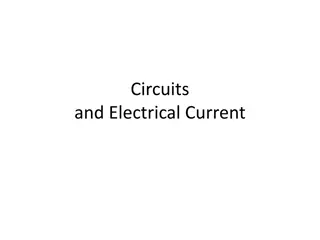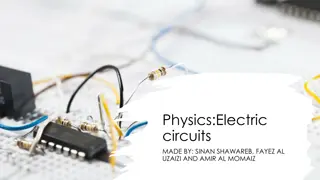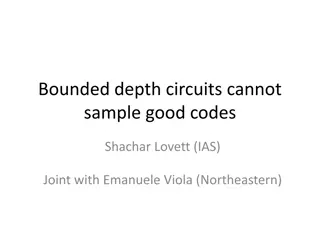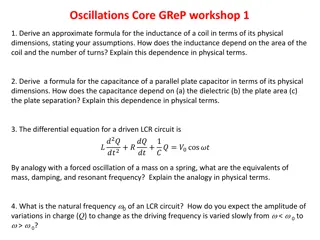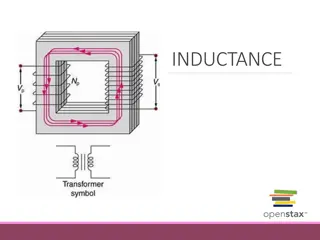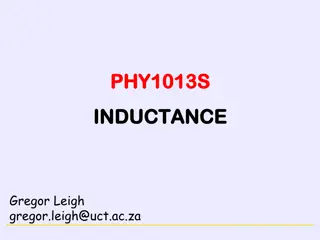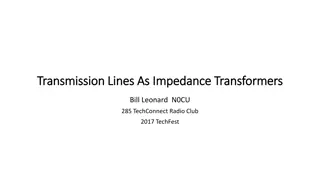Self-Inductance and Inductance in Circuits
The concepts of self-inductance, inductance, and energy of a magnetic field in electrical circuits. Delve into the effects of changing currents on magnetic flux, induced EMF, and self-induced EMF. Learn about the significance of inductance in solenoids and its relation to geometric properties.
Download Presentation

Please find below an Image/Link to download the presentation.
The content on the website is provided AS IS for your information and personal use only. It may not be sold, licensed, or shared on other websites without obtaining consent from the author.If you encounter any issues during the download, it is possible that the publisher has removed the file from their server.
You are allowed to download the files provided on this website for personal or commercial use, subject to the condition that they are used lawfully. All files are the property of their respective owners.
The content on the website is provided AS IS for your information and personal use only. It may not be sold, licensed, or shared on other websites without obtaining consent from the author.
E N D
Presentation Transcript
Chapter 32 Inductance 32-1 Self-Inductance 32-3 Energy of a Magnetic Field
32-1 Self-Inductance When the switch is closed, the current does not immediately reach its maximum value Faraday s law can be used to describe the effect As the source current increases with time, the magnetic flux through the circuit loop due to this current also increases with time. This increasing flux creates an induced emf in the circuit. The direction of the induced emf is such that it would cause an induced current in the loop (if a current were not already flowing in the loop), which would establish a magnetic field that would oppose the change in the source magnetic field.
After the switch is closed, the current produces a magnetic flux through the area enclosed by the loop. As the current increases toward its equilibrium value, this magnetic flux changes in time and induces an emf in the loop (back emf ). The emf set up in this case is called a self-induced emf.
A current in the coil produces a magnetic field directed toward the left (a) If the current increases, the increasing flux creates an induced emf of the polarity shown (b) The polarity of the induced emf reverses if the current decreases (c)
= B nI o ( ) d nIA d dI dt NBA dI I = = = = o dt N N N nA B o dt dt N dI dt dI dt = = L B I N Define: Self Inductance Inductance Units = L B I V = = = = L s Henry H A/s
Inductance of a Solenoid The magnetic flux through each turn is = B BA oN = A I Therefore, the inductance is 2 N N A = = L B o I L = inductance of the solenoid N = # of turns in solenoid l = length of solenoid A = cross sectional area of solenoid n = # of turns per unit length This shows that L depends on the geometry of the object The inductance is a measure of the opposition to a change in current
Example : Example : Speaking anthropomorphically, the coil wants to fight the changes so if it wants to push current rightward (when the current is already going rightward) then i must be in the process of decreasing.
Example : A coil having 20 turns has an induced emf of 4 mV when the current is changing at the rate of 2 A/s. What is the inductance? E i t i/ t = 2 A/s = = E ; L L 4 mV / i t ( 0.004 V) 2 A/s = L L = 2.00 mH R
Example A solenoid of area 0.002 m2 and length 30 cm, has 100 turns. If the current increases from 0 to 2 A in 0.1 s, what is the inductance of the solenoid? First we find the inductance of the solenoid: (4 x 10 -7 2 2 2 )(100) (0.002 m ) N A T m A 0.300 m = = 0 L l L = 8.38 x 10-5 H A Note: L does NOT depend on current,. R
Example (Cont.): If the current in the 83.8-H solenoid increased from 0 to 2 A in 0.1 s, what is the induced emf? l L = 8.38 x 10-5 H A i t R = E L -5 (8.38 x 10 H)(2 A - 0) 0.100 s 1.68 mV = E = E
Example : What is the potential energy stored in a 0.3 H inductor if the current rises from 0 to a final value of 2 A? = 2 U Li 1 2 L = 0.3 H U = = 2 1 2(0.3 H)(2 A) 0.600 J R U = 0.600 J I = 2 A This energy is equal to the work done in reaching the final current I; it is returned when the current decreases to zero.
32-3 Energy of a Magnetic Field dI = 0 Kirchoff L IR dt dI = 2 0 I LI I R power dt I is the rate at which energy is being supplied by the battery I2R is the rate at which the energy is being delivered to the resistor LI (dI/dt) must be the rate at which the energy is being stored in the magnetic field dU dt dU dI dt = LI B U denote the energy stored in the inductor at any time = LI dI B
U I B = = U dU LIdI B B 0 0 1 2 Remember for a capacitor: = 2 U LI 1 2 B = 2 U CV = = 2 L n A B nI 0 0 1 2 1( 2 B A is the volume of the solenoid = = 2 2 2 )( ) U LI n A 0 B n 0 2 B Energy of a Magnetic Field = ( ) U A B 2 0 Energy Density in a coil 2 U A B = = u B 1 2 B 2 = 2 u E 0 o
Example 4: The final steady current in a solenoid of 40 turns and length 20 cm is 5 A. What is the energy density? (4 x 10 )(40)(5 A) 0.200 m l -7 NI = = 0 B A B = 1.26 mT R 2 -3 2 (1.26 x 10 T) 2(4 x 10 B = = u -7T m 2 ) 0 A Energy density is important for the study of electro- magnetic waves. u = 0.268 J/m3
Example a) Find The Inductance of a long solenoid length L=2m and radius=2cm with 2000 turns? b) if current decreased from 4A to 0 in 2 microseconds what is magnitude and direction of the self induced emf ? c) what is the energy stored in the solenoid at the beginning of the 2 microsecond interval? d) How much electrical power is dissipated during this time? 2 N A a) Inductance value = o L l = 2 A r A = 1.257x10-3m2 L = (1.2566x10-6)(2000) 2(1.257x10-3)/2.0 = = 3.159x10-3 H
dI I I = = 2 1 L L b) dt t emf = (3.159x10-3)(4-0)/(2.0x10-6) = 6318V in direction of current trying to stop field collapse by trying to maintain current c) Energy? 1LI U = 2 1 1 2 U1 = (1/2) (3.158x10-3)(4) 2 = 2.52x10-2 Joules e) Power U P U = = 1 t t P = (2.52x10-2)/(2x10-6) = 12,632 W
A 10.0-mH inductor carries a current I = Imax sin t, with Imax = 5.00 A and /2 = 60.0 Hz. What is the back emf as a function of time? Ans: (18.8V)cos (377t) An inductor in the form of a solenoid contains 420 turns, is 16.0 cm in length, and has a cross-sectional area of 3.00 cm2. What uniform rate of decrease of current through the inductor induces an emf of 175 V? Ans: -0.421A/s
Summary N = B L Inductance (units, henry H) is given by Inductance of a solenoid is: i 2 N A = 0 L (depends only on geometry) l d di = = B N L EMF, in terms of inductance, is: L dt dt 1Li UB= 2 Energy in magnetic field Energy in inductor: 2
Preflight 16: 5) The ring is moving to the right. The magnetic field is uniform and constant in time. You are looking from right to left. What is the induced current? a) zero b) clockwise c) counter-clockwise 6) The ring is stationary. The magnetic field is decreasing in time. What is the induced current? a) zero b) clockwise c) counter-clockwise
A conducting rectangular loop moves with constant velocity v in the +x direction through a region of constant magnetic field B in the -z direction as shown. What is the direction of the induced current in the loop? y X X X X X X X X X X X X X X X X X X X X X X X X X X X X X X X X X X X X X X X X X X X X X X X X v x (a) ccw (b) cw (c) no induced current I y A conducting rectangular loop moves with constant velocity v in the -y direction and a constant current I flows in the +x direction as shown. What is the direction of the induced current in the loop? v x (a) ccw (b) cw (c) no induced current
y A conducting rectangular loop moves with constant velocity v in the +x direction through a region of constant magnetic field B in the -z direction as shown. What is the direction of the induced current in the loop? X X X X X X X X X X X X X X X X X X X X X X X X X X X X X X X X X X X X X X X X X X X X X X X X v 1A 2A x (a) ccw (b) cw (c) no induced current There is a non-zero flux B passing through the loop since B is perpendicular to the area of the loop. Since the velocity of the loop and the magnetic field are CONSTANT, however, this flux DOES NOT CHANGE IN TIME. Therefore, there is NO emf induced in the loop; NO current will flow!!
A conducting rectangular loop moves with constant velocity v in the -y direction and a constant current I flows in the +x direction as shown. What is the direction of the induced current in the loop? 2B I y v x (a) ccw (b) cw (c) no induced current The flux through this loop DOES change in time since the loop is moving from a region of higher magnetic field to a region of lower field. Therefore, by Lenz Law, an emf will be induced which will oppose the change in flux. Current is induced in the clockwise direction to restore the flux.
